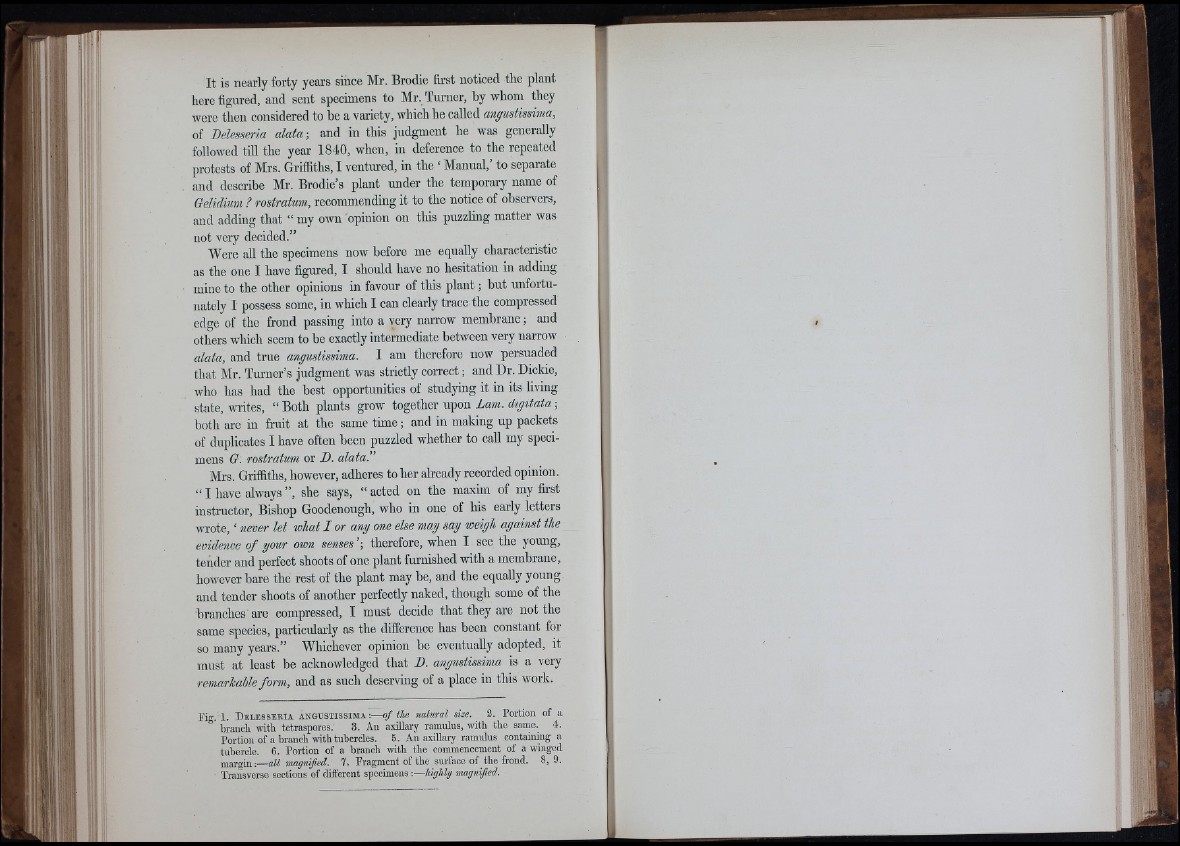
It is nearly forty years since Mr. Brodie first noticed the plant
here figured, and sent specimens to Mr. Turner, by whom they
were then considered to he a variety, which he called angustissima,
of Delesseria alata; and in this judgment he was generally
followed till the year 1840, when, in deference to the repeated
protests of Mrs. Griffiths, I ventured, in the ‘ Manual,’ to separate
and describe Mr. Brodies plant under the temporary name of
Gelidium ? rostratum, recommending it to the notice of observers,
and adding that “ my own opinion on this puzzling matter was
not very decided.”
Were all the specimens now before me equally characteristic
as the one I have figured, I should have no hesitation in adding
mine to the other opinions in favour of this plant; but unfortunately
I possess some, in which I can clearly trace the compressed
edge of the frond passing into a very narrow membrane; and
others which seem to be exactly intermediate between very narrow
alata, and true angustissima. I am therefore now persuaded
that Mr. Turner’s judgment was strictly correct; and Dr. Dickie,
who has had the best opportunities of studying it in its living
state, writes, “ Both plants grow together upon Lam. digitata;
both are in fruit at the same time; and in making up packets
of duplicates I have often been puzzled whether to call my specimens
G. rostratum or D. alata!’
Mrs. Griffiths, however, adheres to her already recorded opinion.
“ I have always ”, she says, “ acted on the maxim of my first
instructor, Bishop Goodenough, who in one of his early letters
wrote, ‘ never let what I or any one else may say weigh against the
evidence of your men senses ’; therefore, when I see the young,
tender and perfect shoots of one plant furnished with a membrane,
however bare the rest of the plant may he, and the equally young
and tender shoots of another perfectly naked, though some of the
branches are compressed, I must decide that they are not the
same species, particularly as the difference has been constant for
so many years.” Whichever opinion be eventually adopted, it
must at least be acknowledged that D. angustissima is a very
remarkable form, and as such deserving of a place in this work.
K g . 1. D e l e s s e e i a a n g u s t i s s im a :— o f the natural size. 2. Poition of a
biancli ivith tetiaspoies. 3. An axiUaiy ramulus, with the same. 4.
Portion of a branch with tubercles. 5. An axiUary ramulus containing a
tubercle. 6. Portion of a branch with the commencement of a winged
mai-gin:—a// magnified. 7. Fragment of the surface of the frond. 8, 9.
Transverse sections of difterent specimens :—/«' ”
.ii